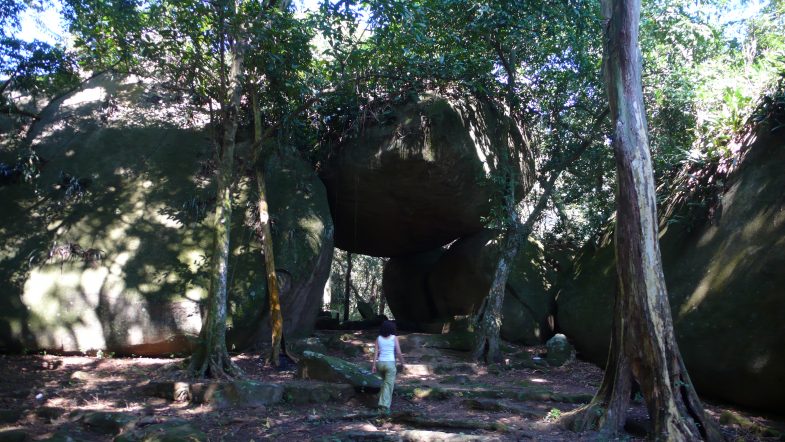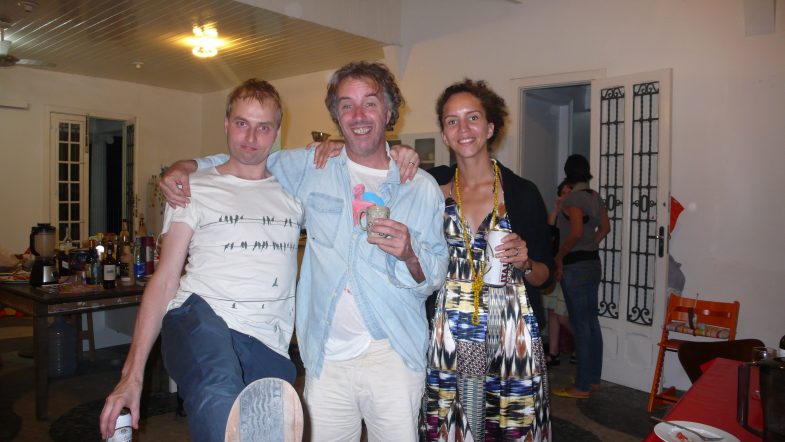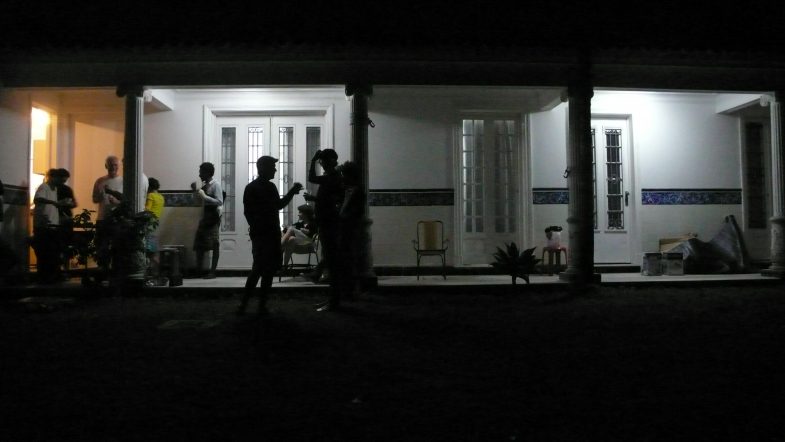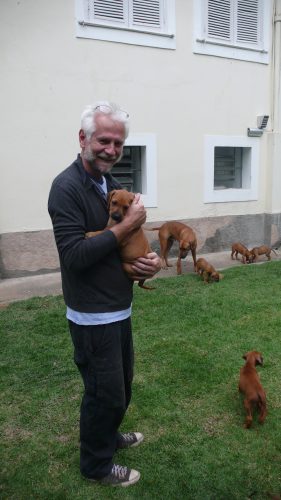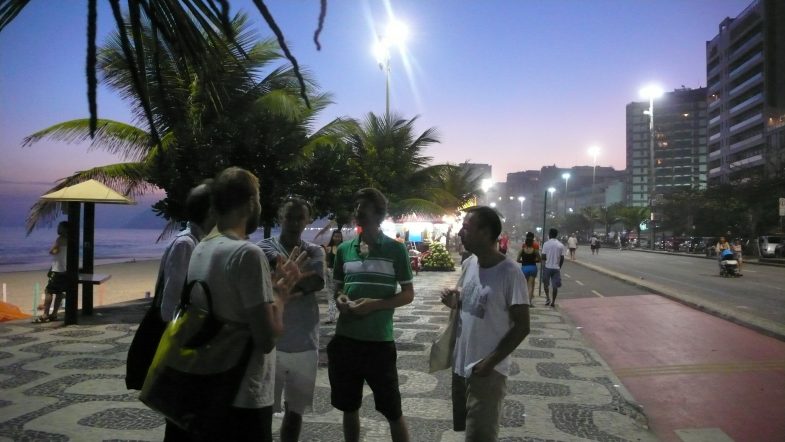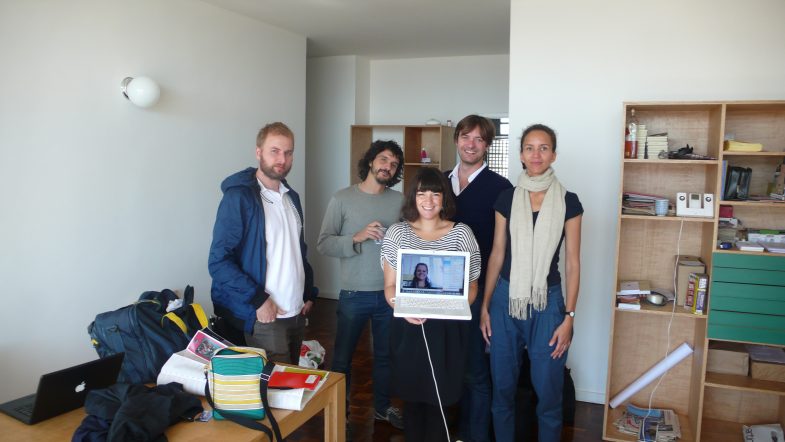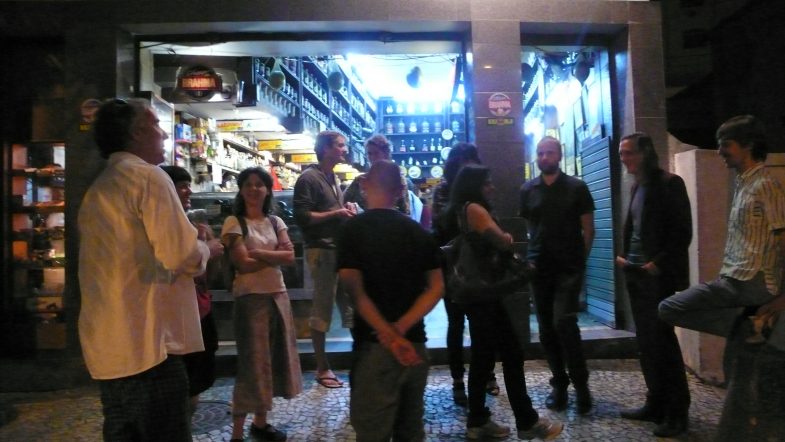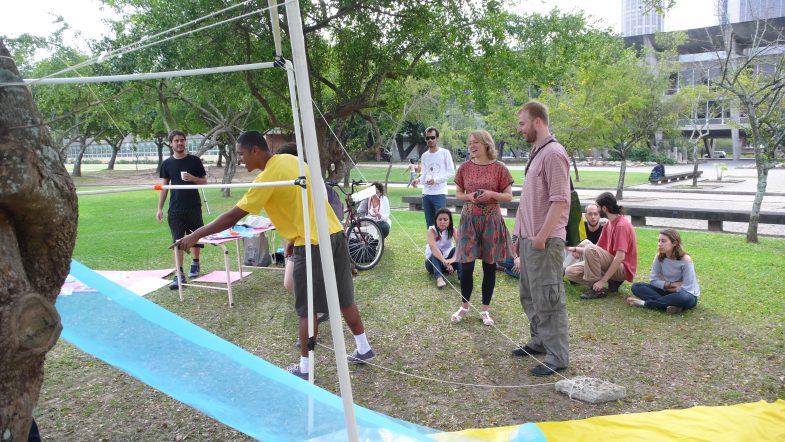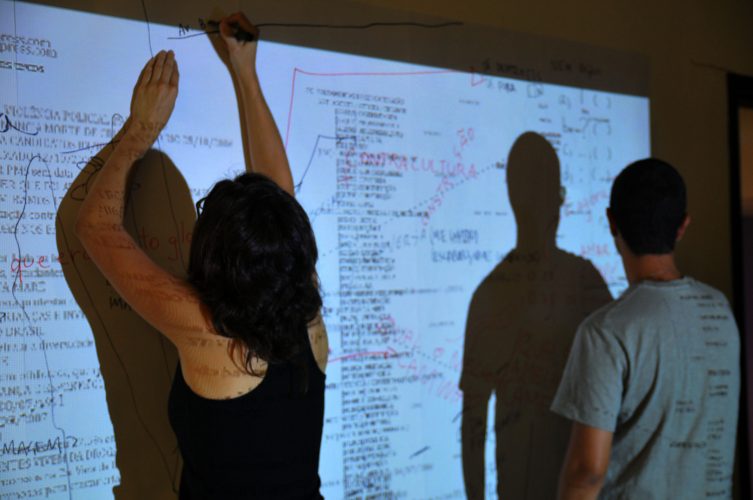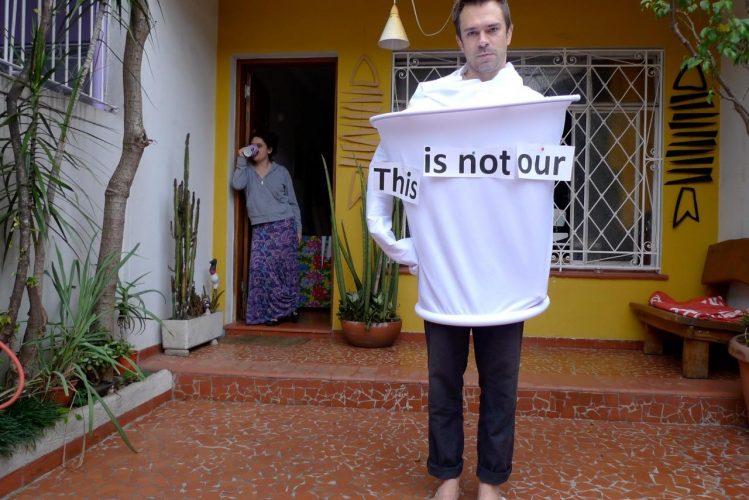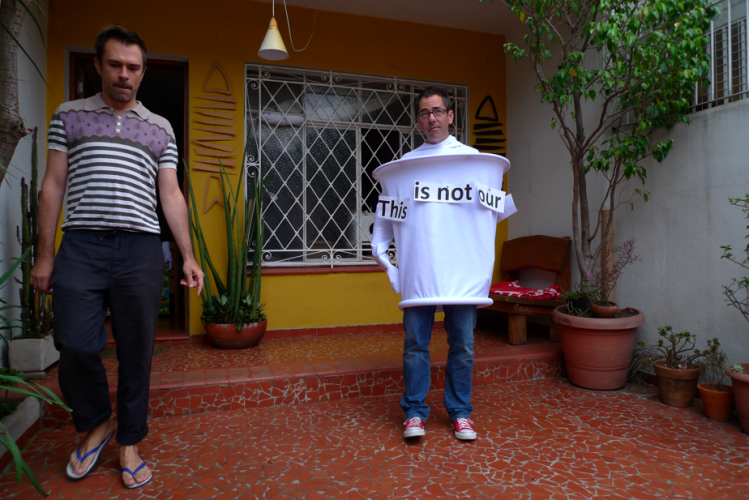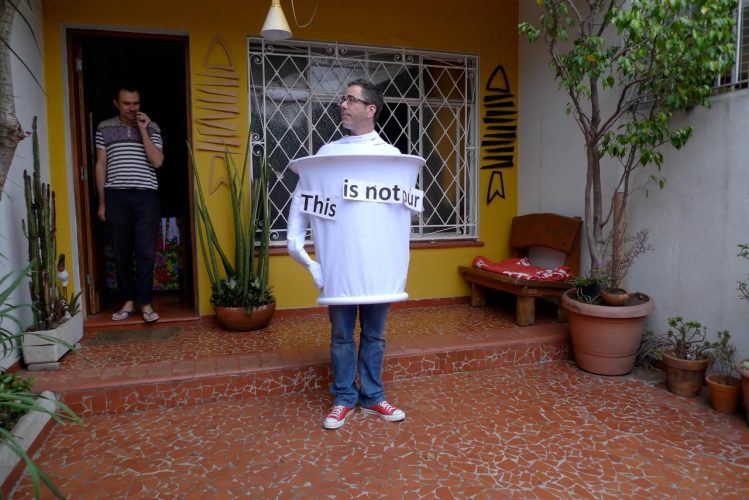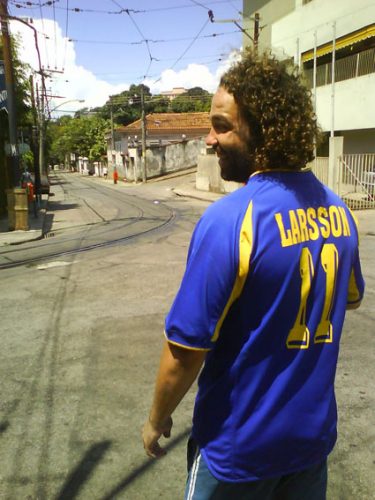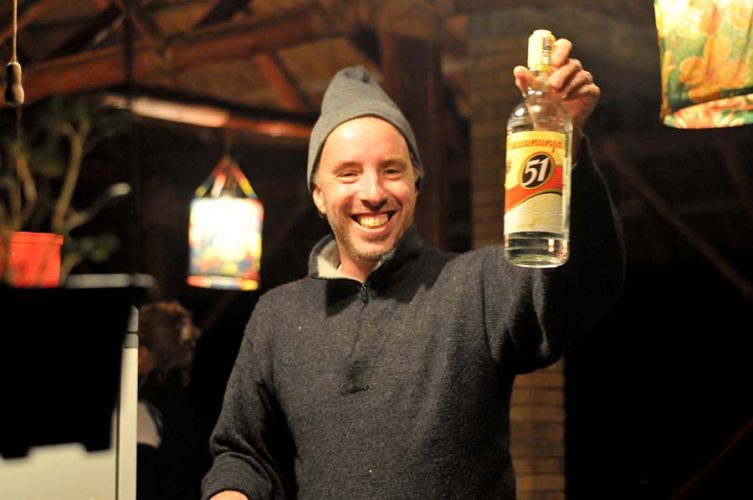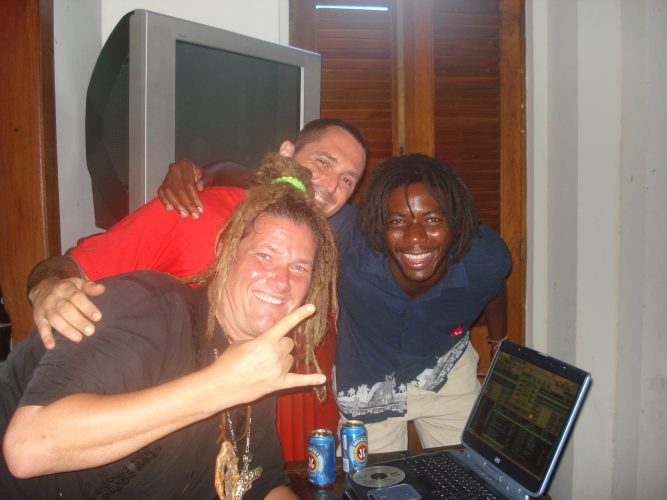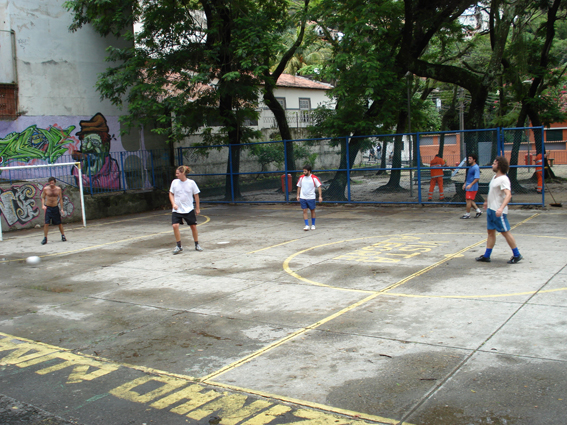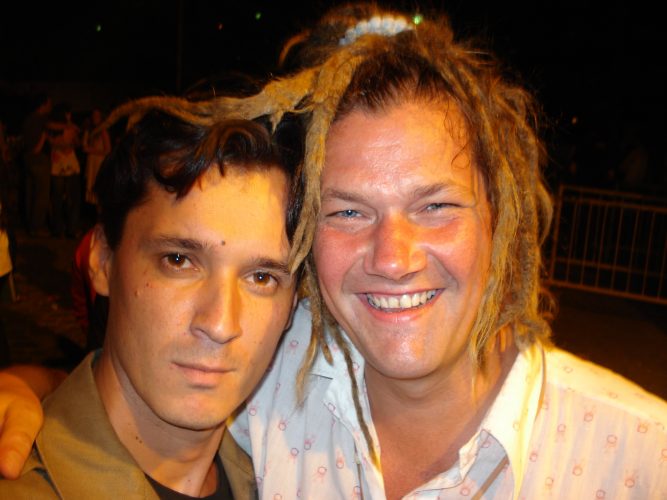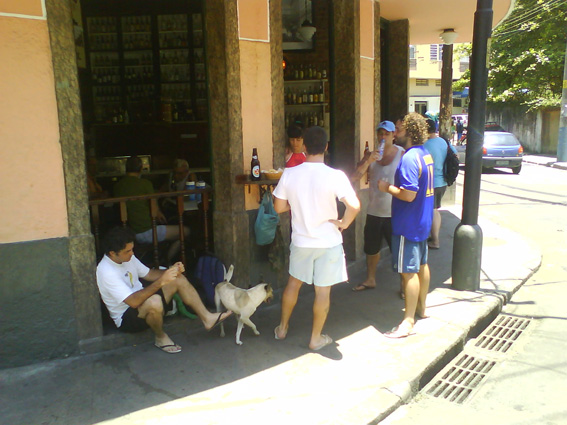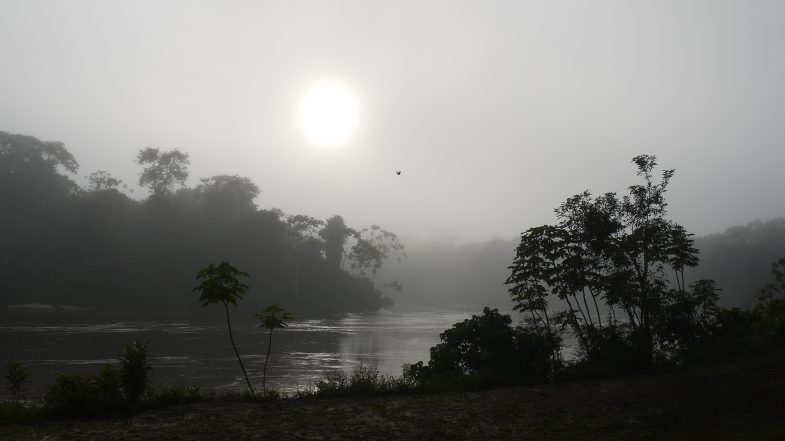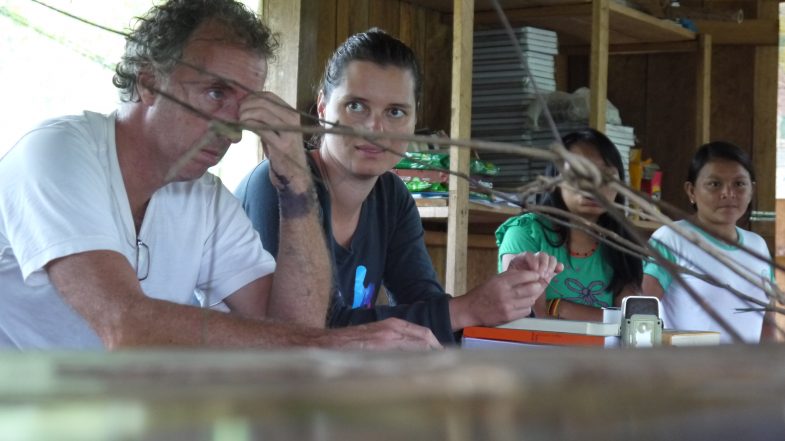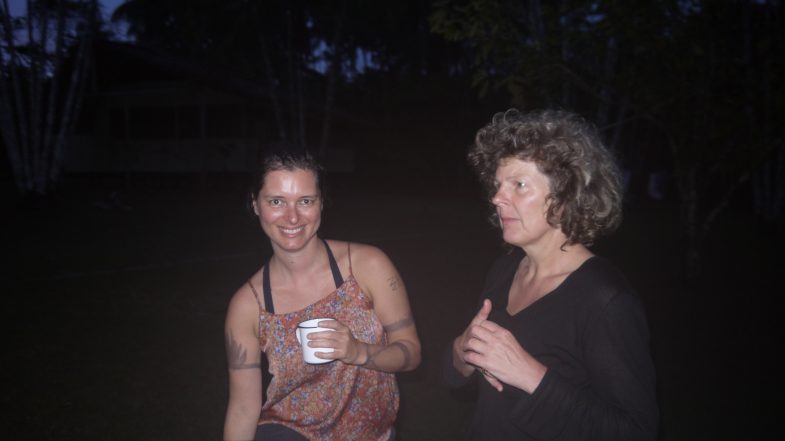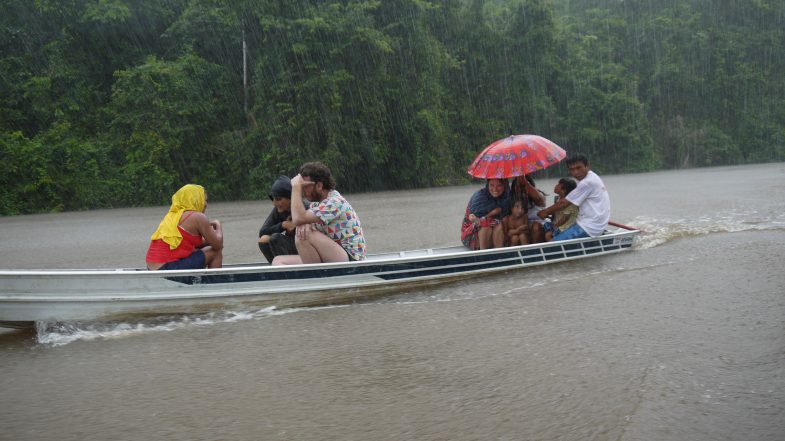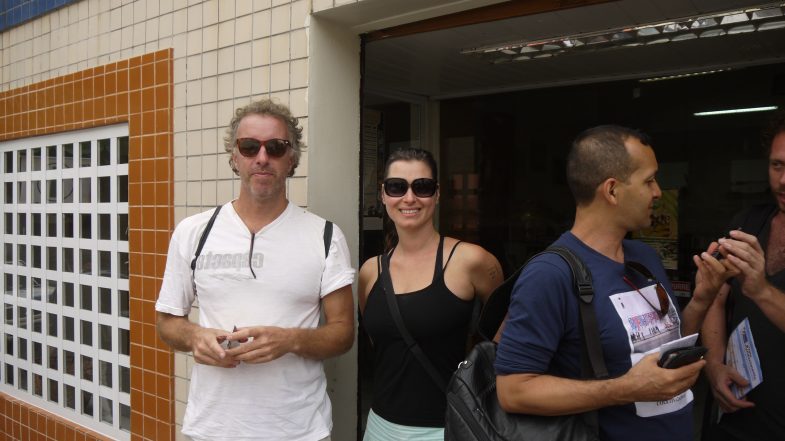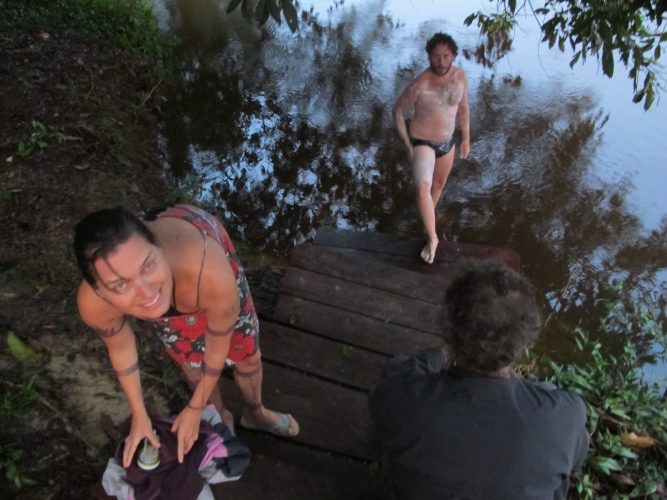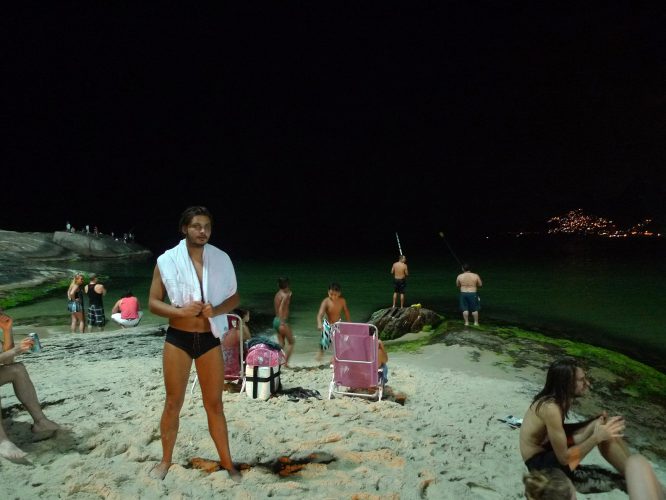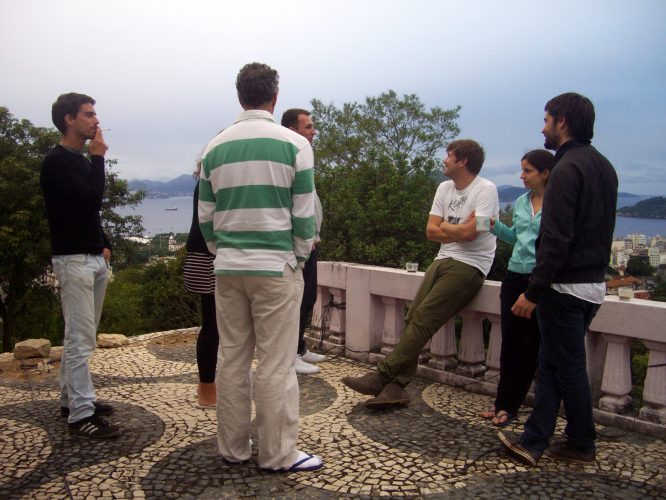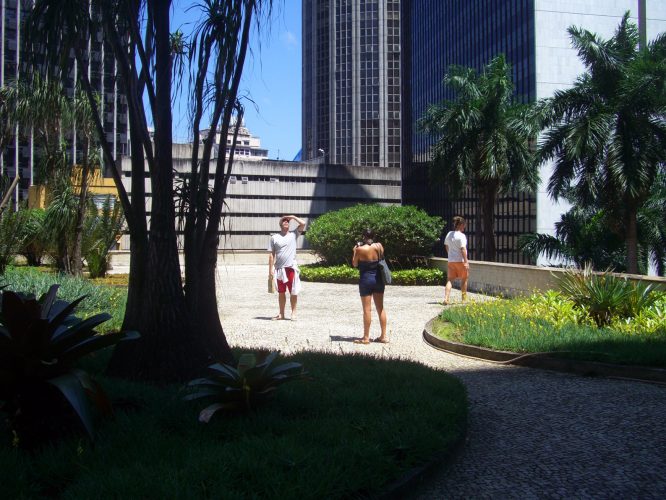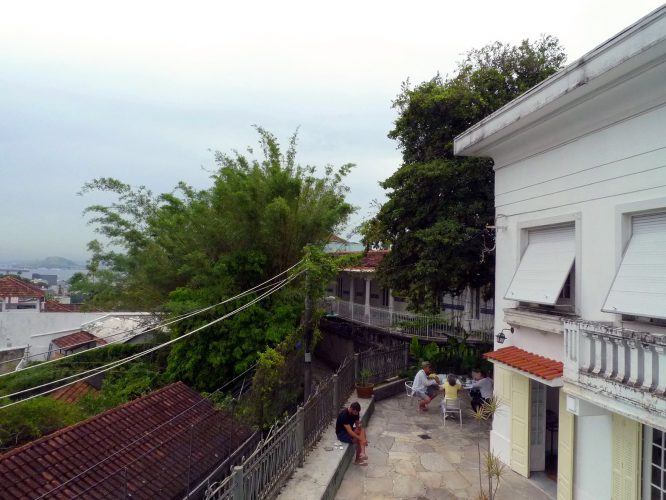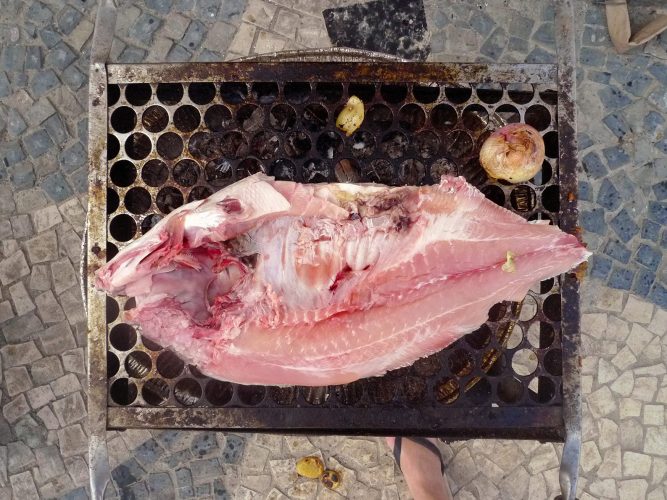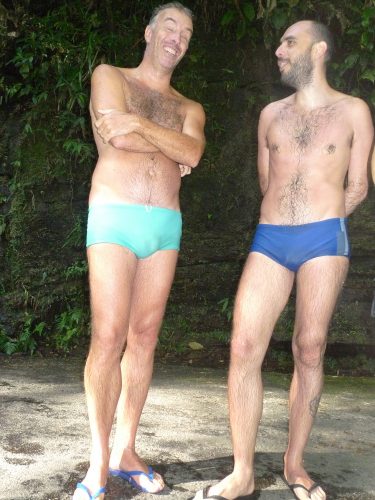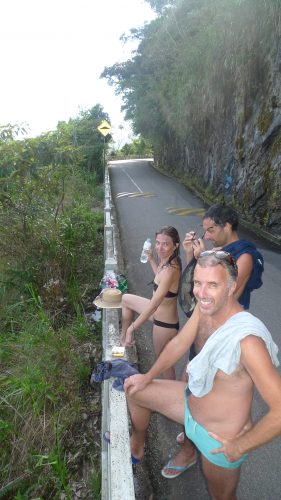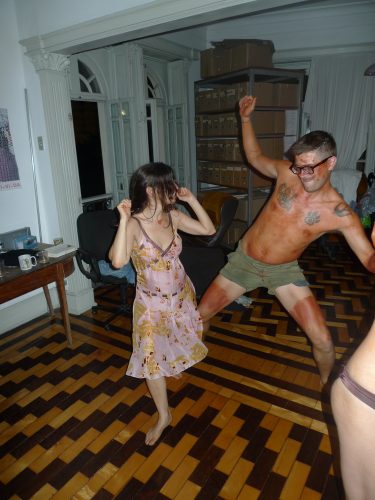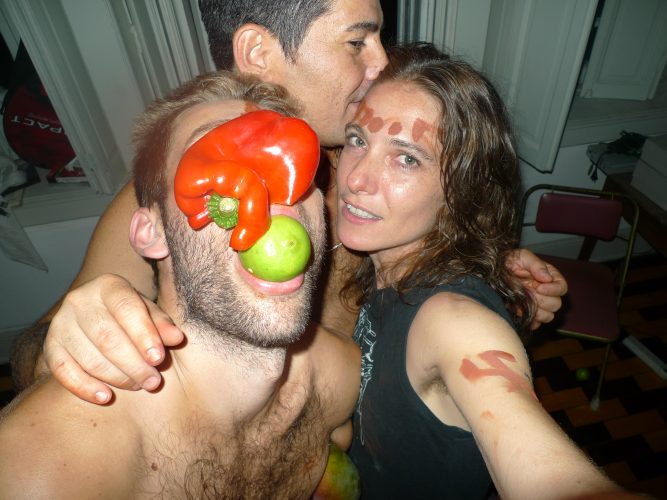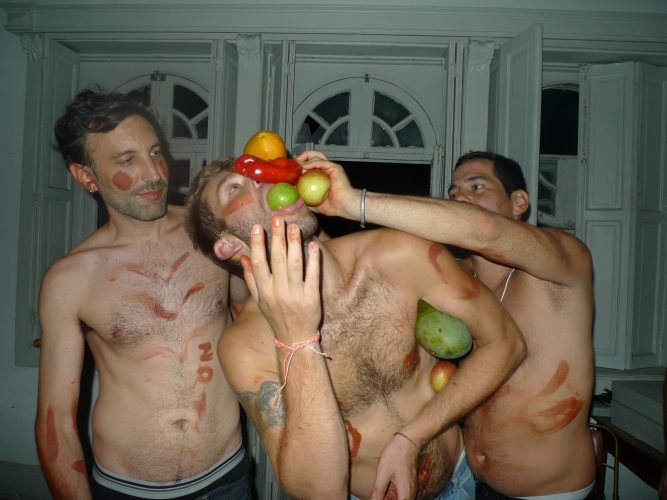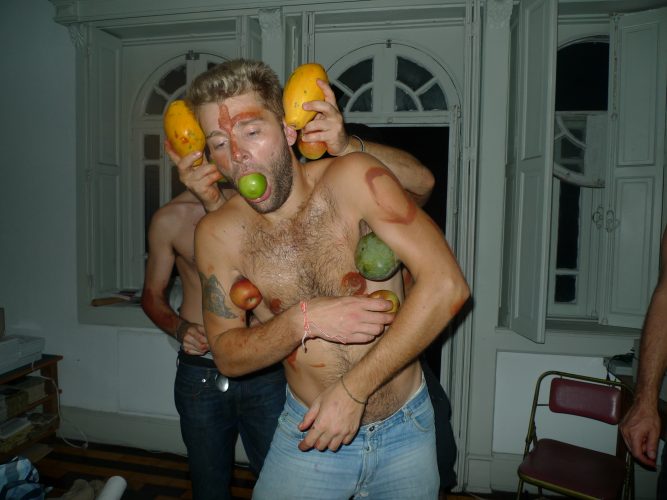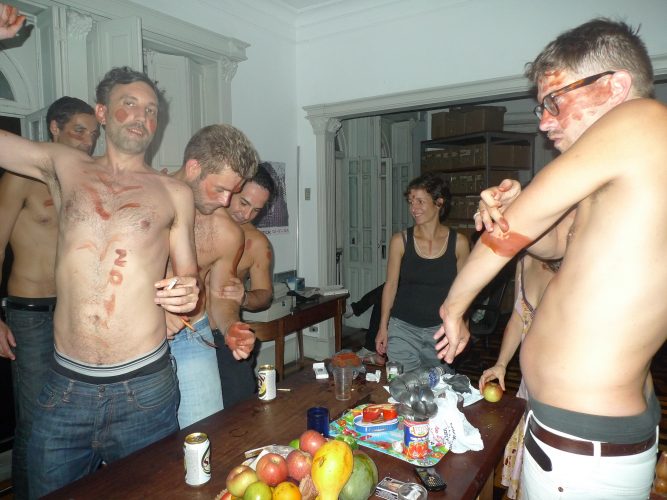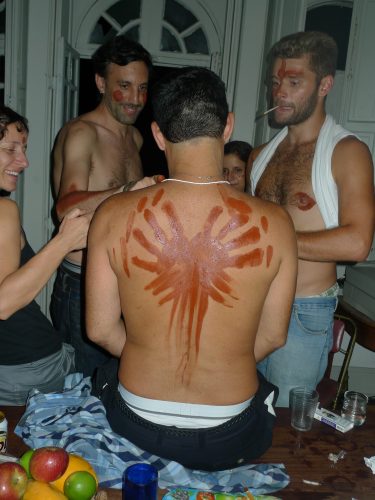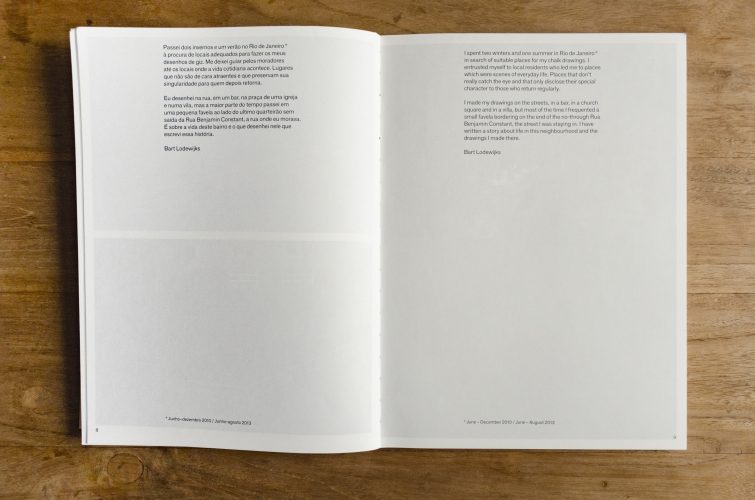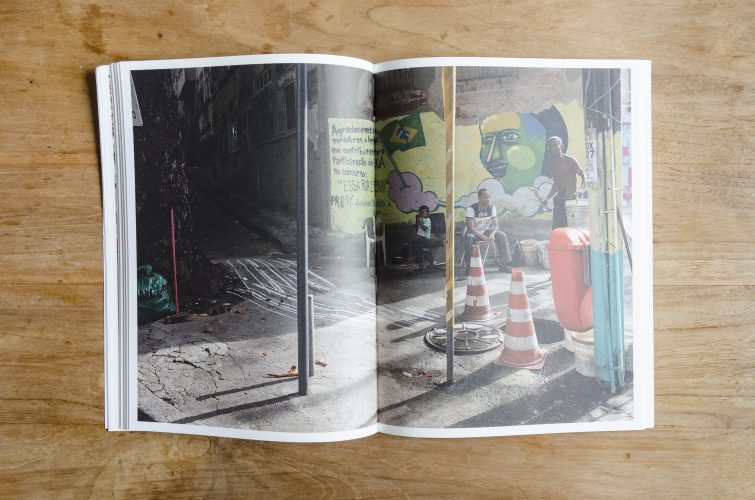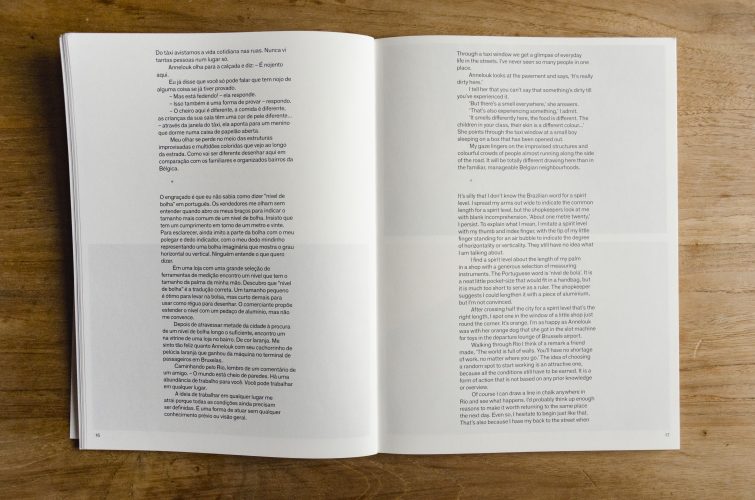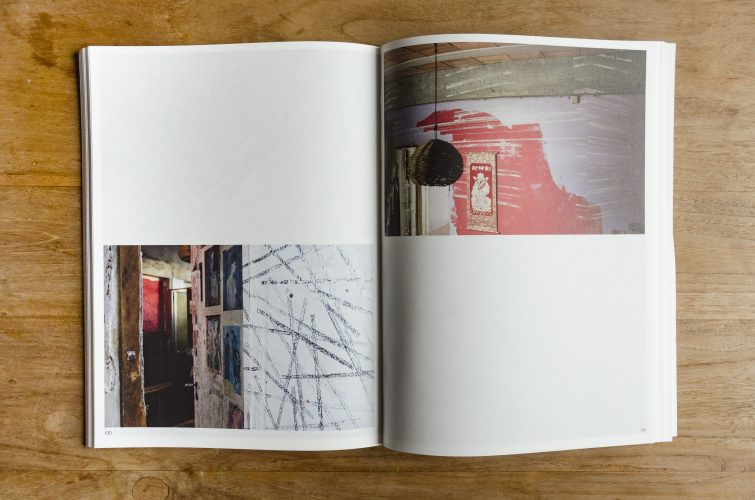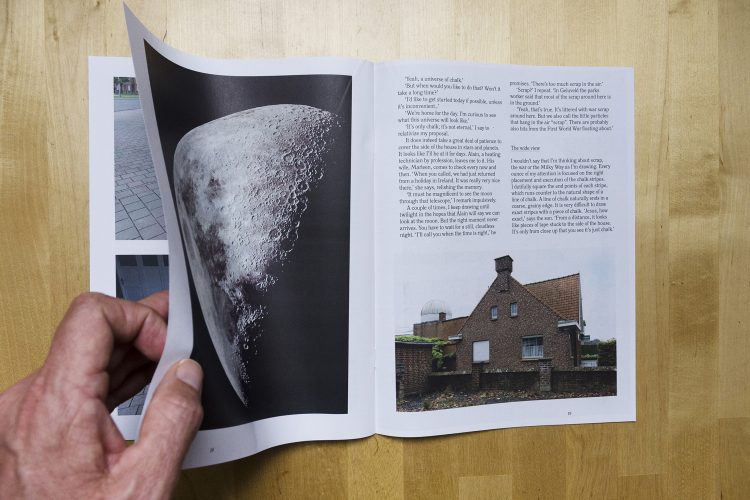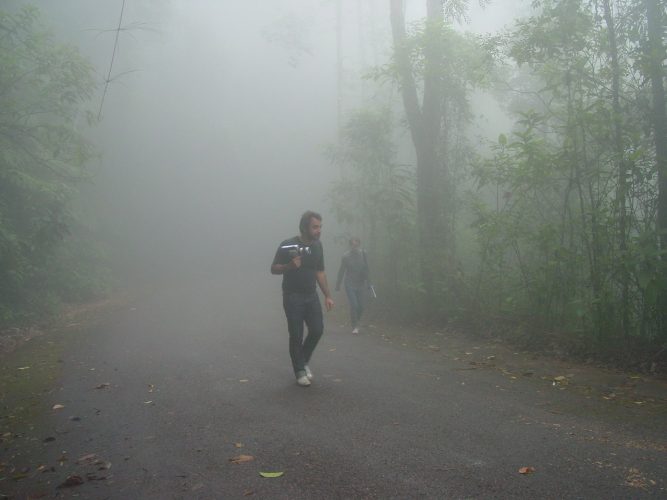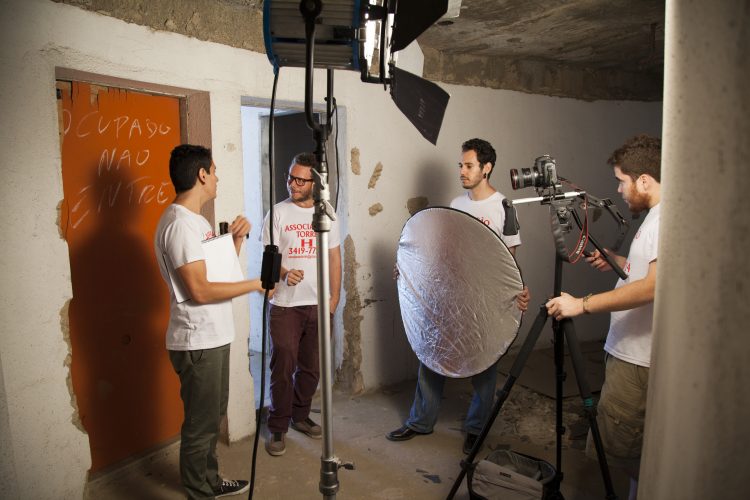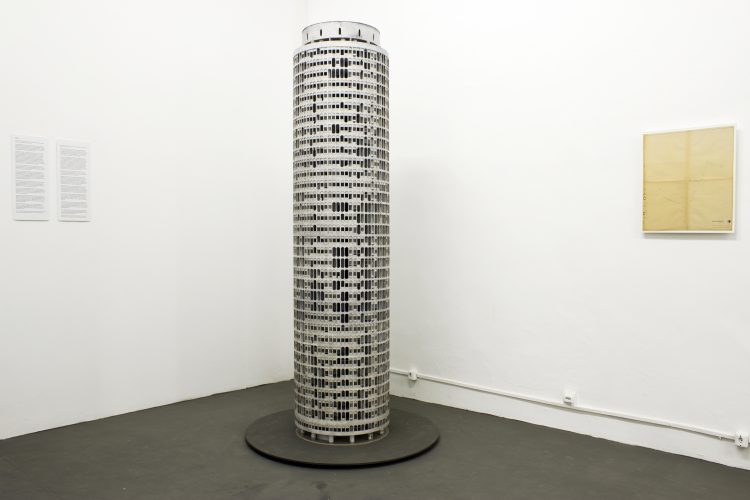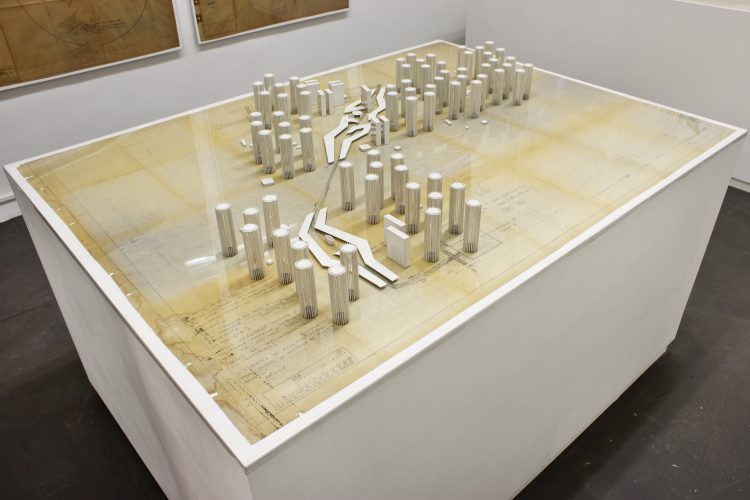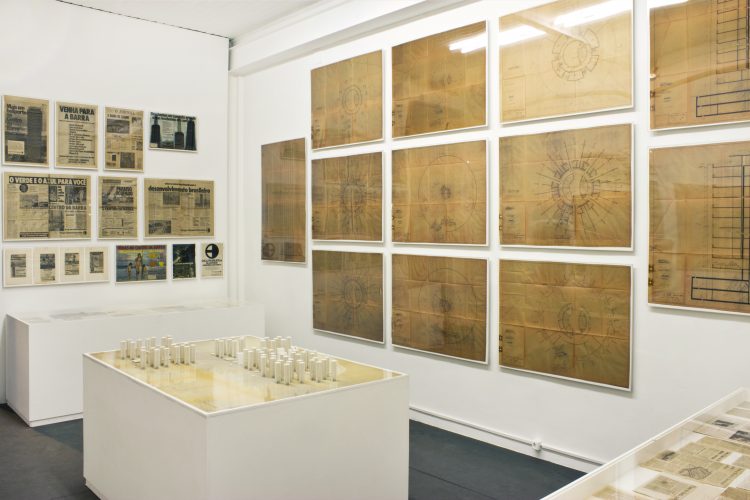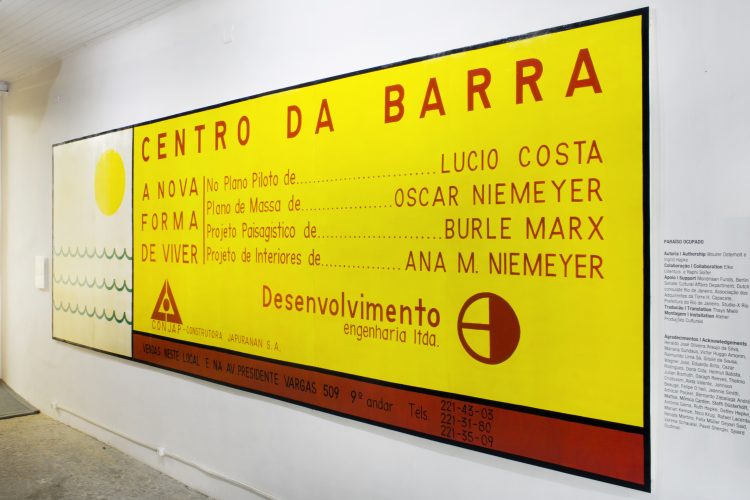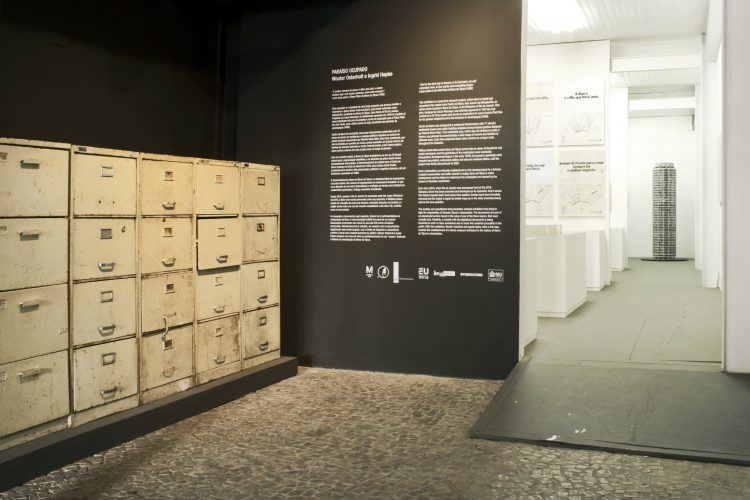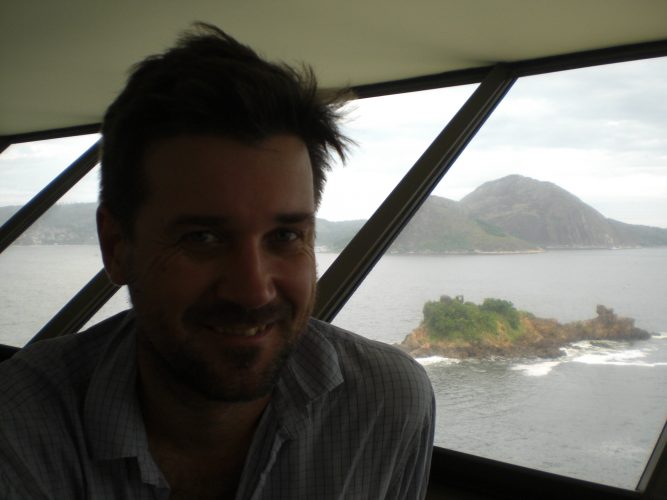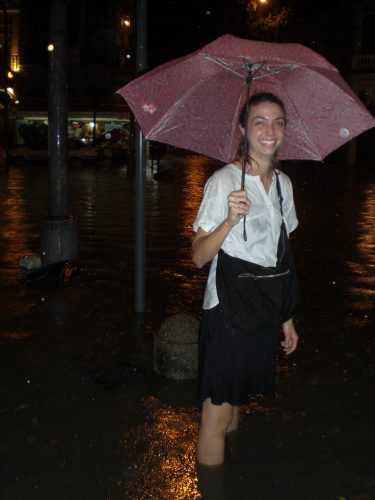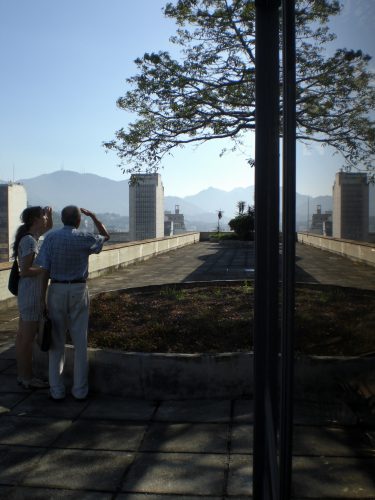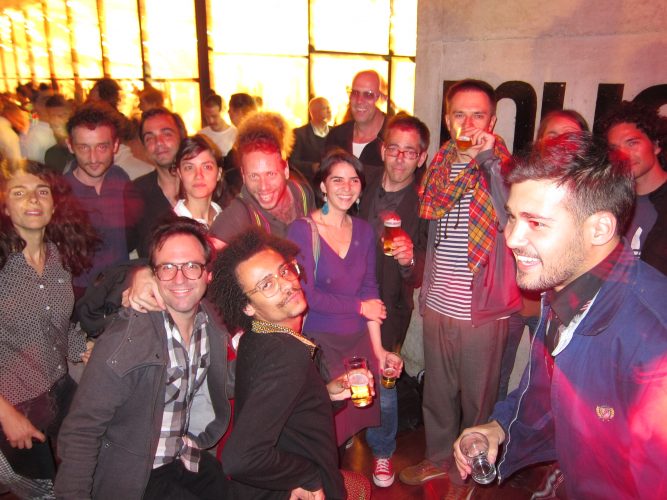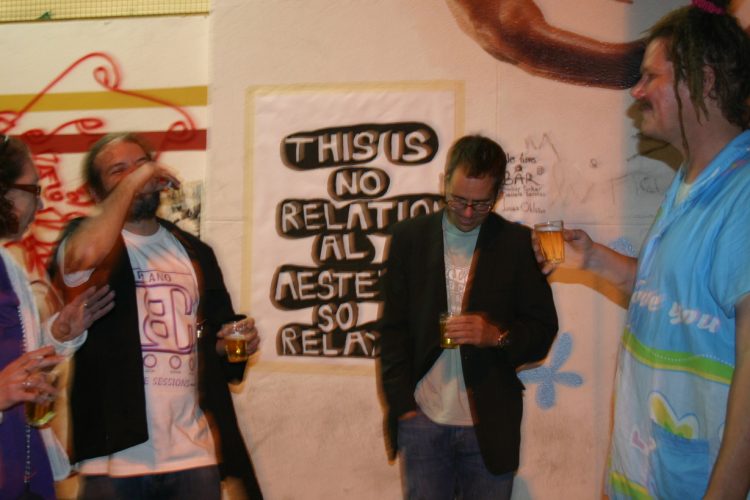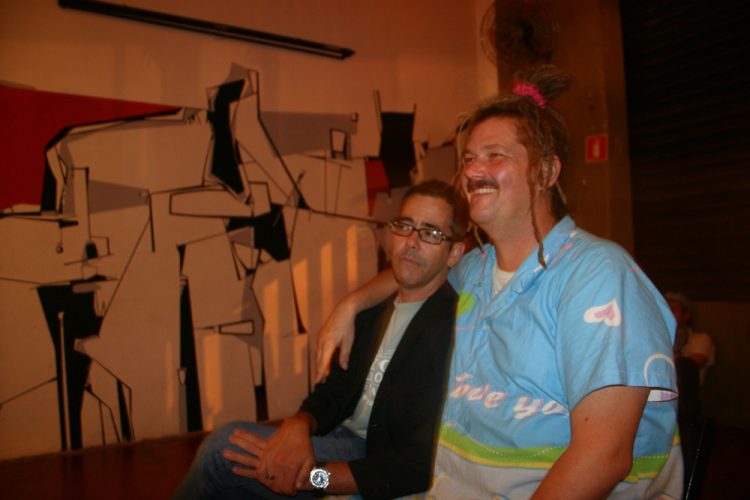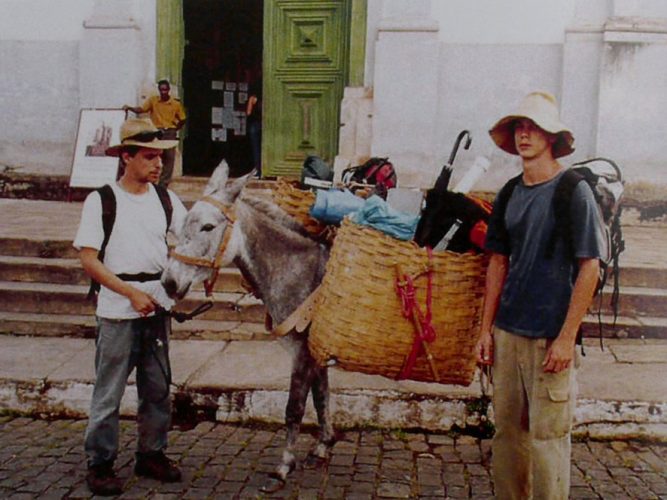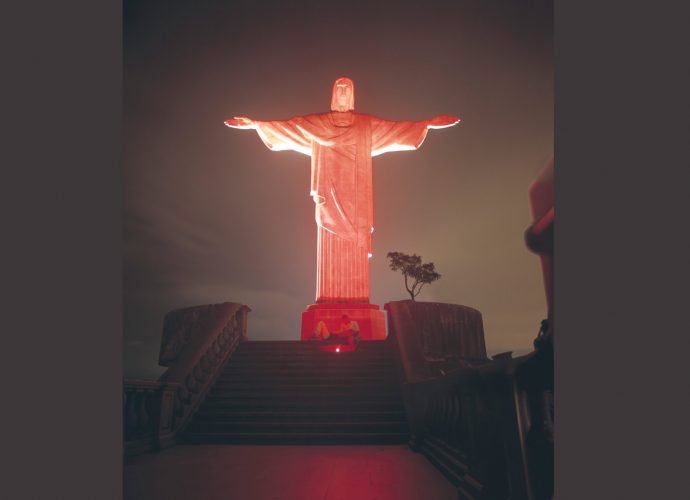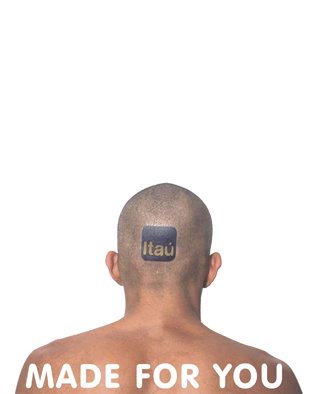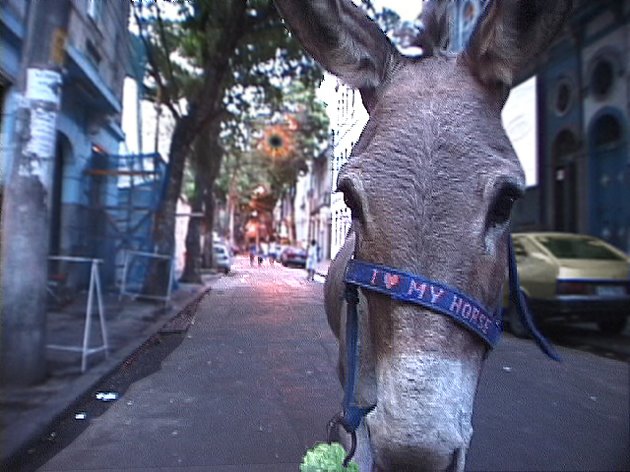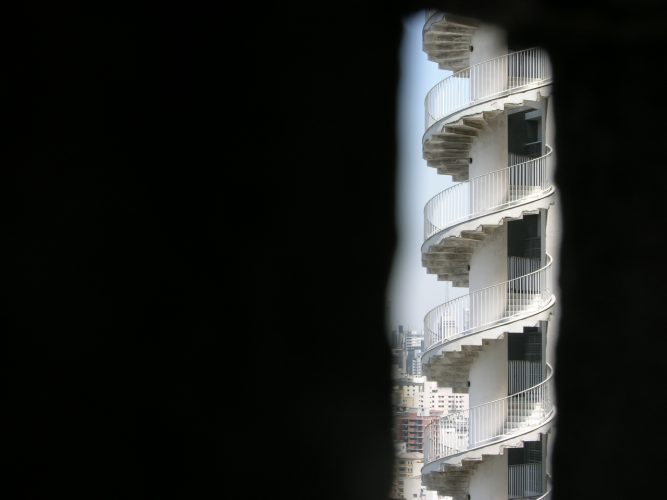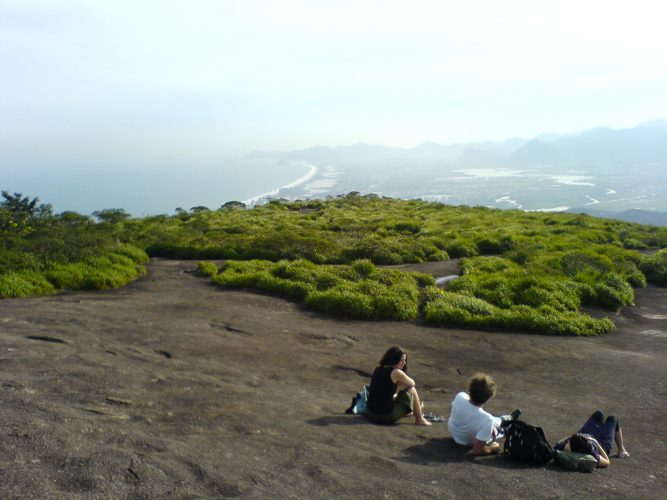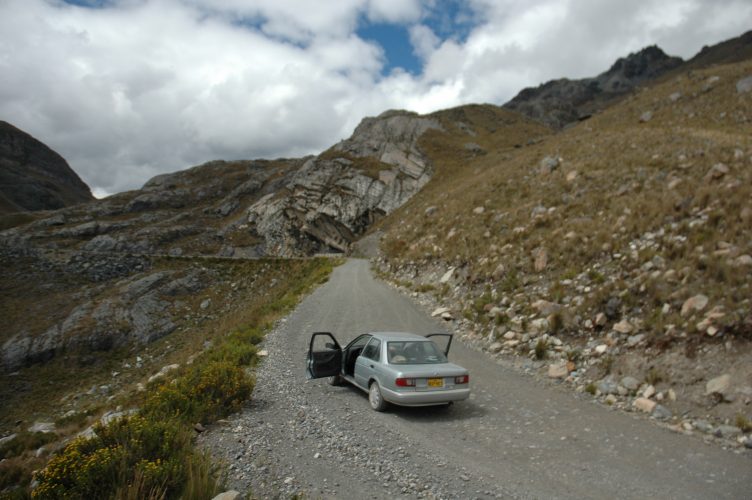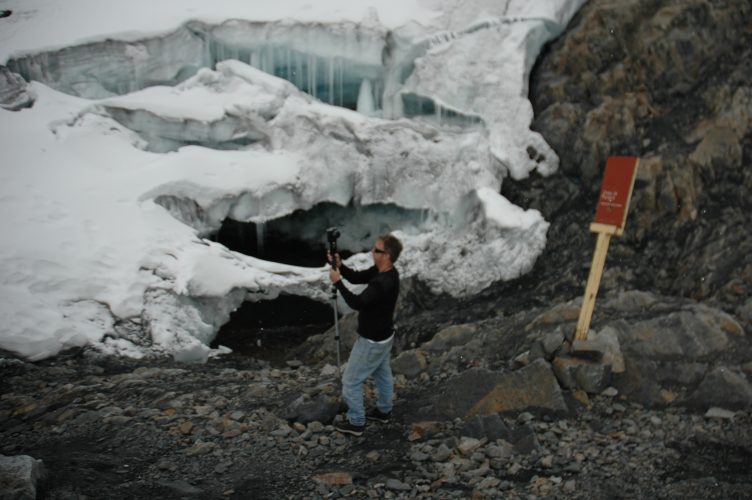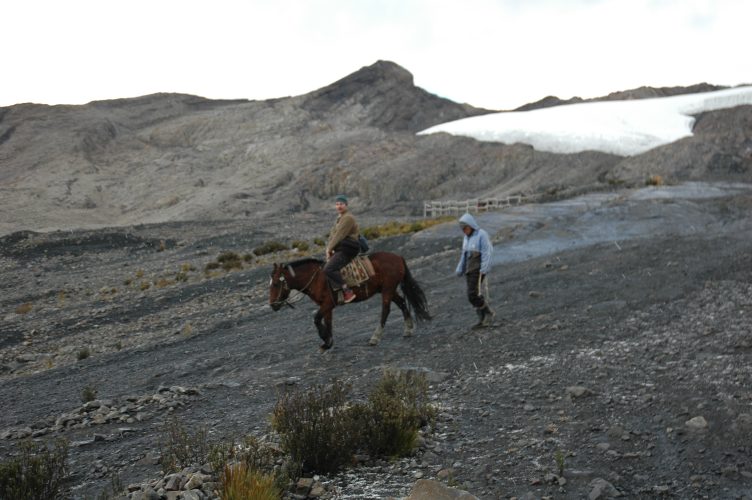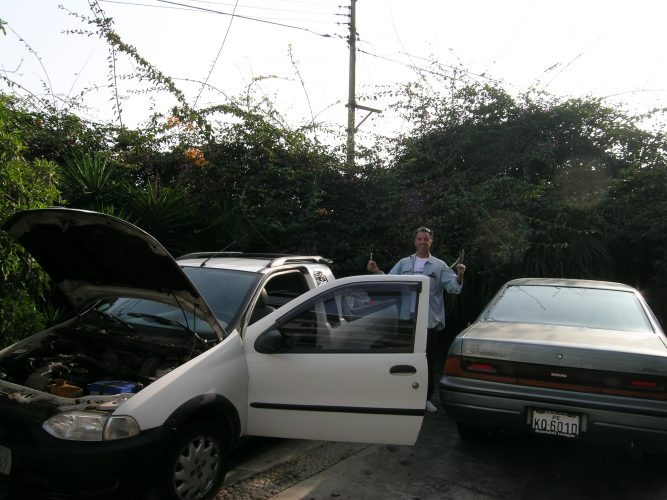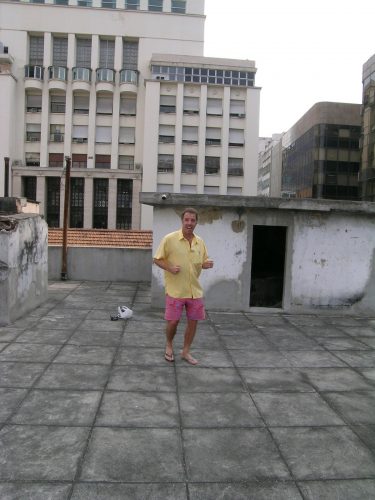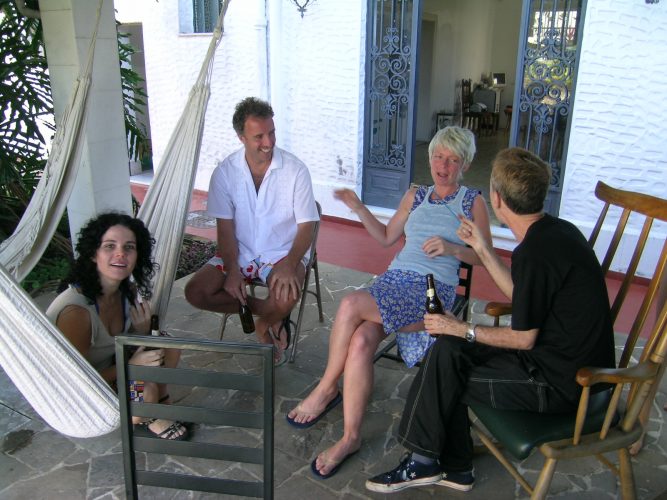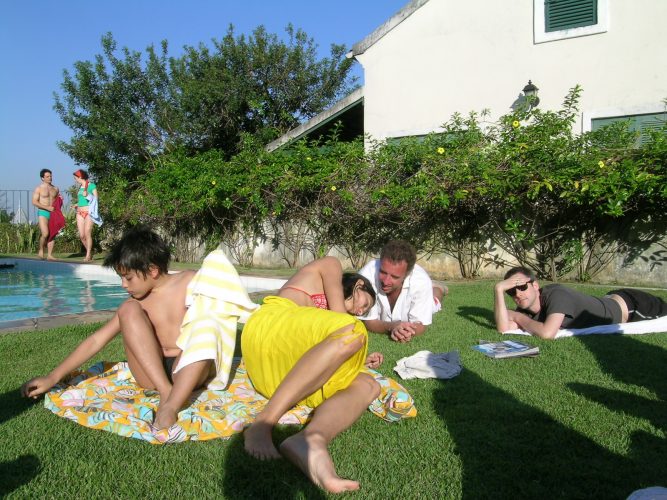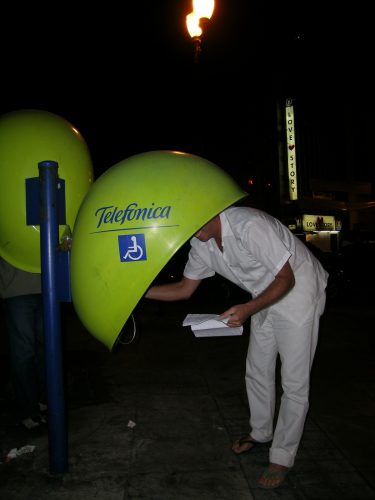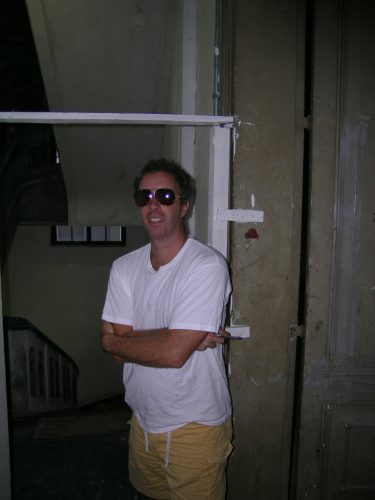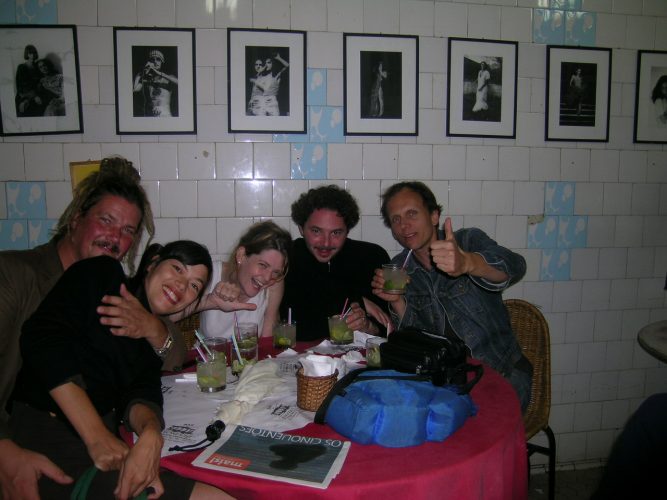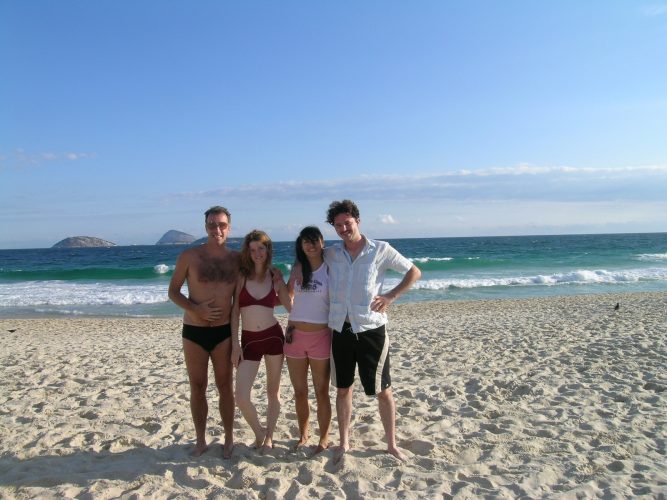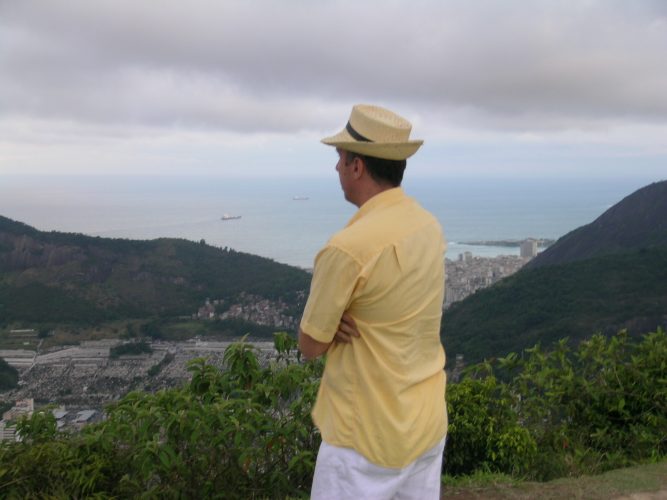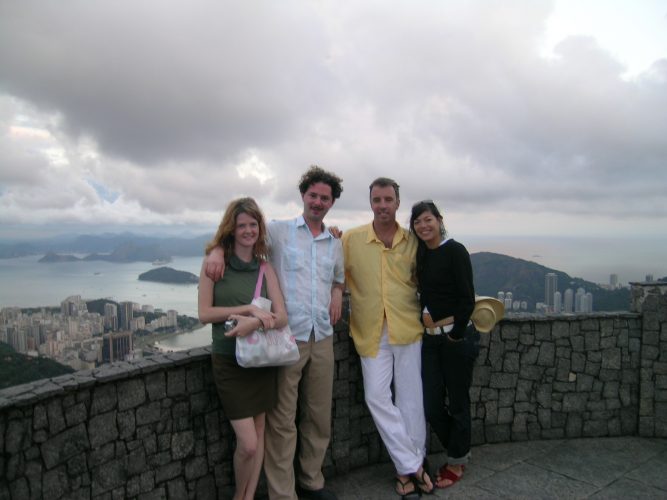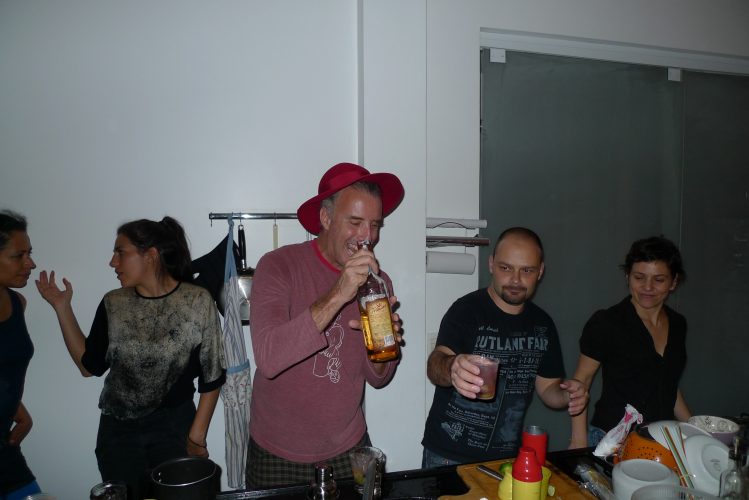Arto Lindsay
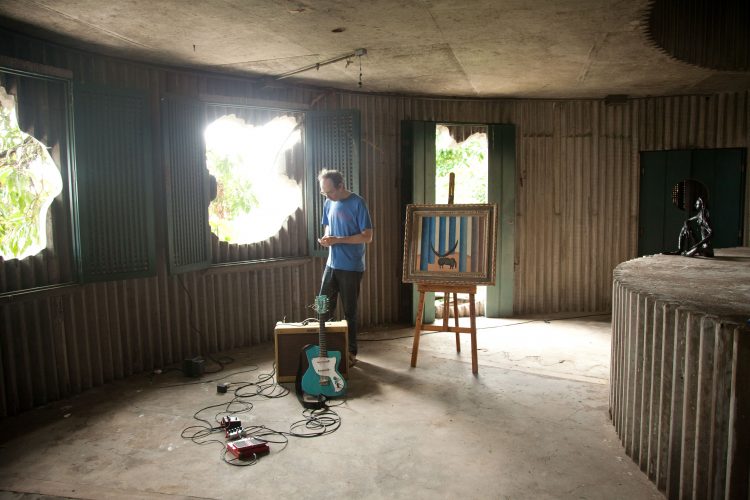
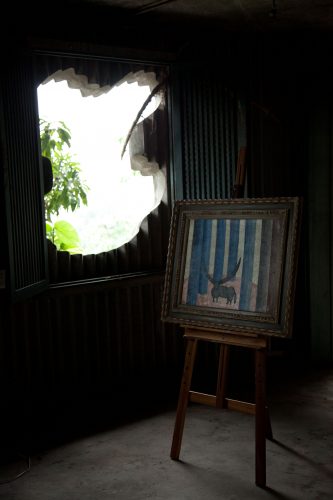
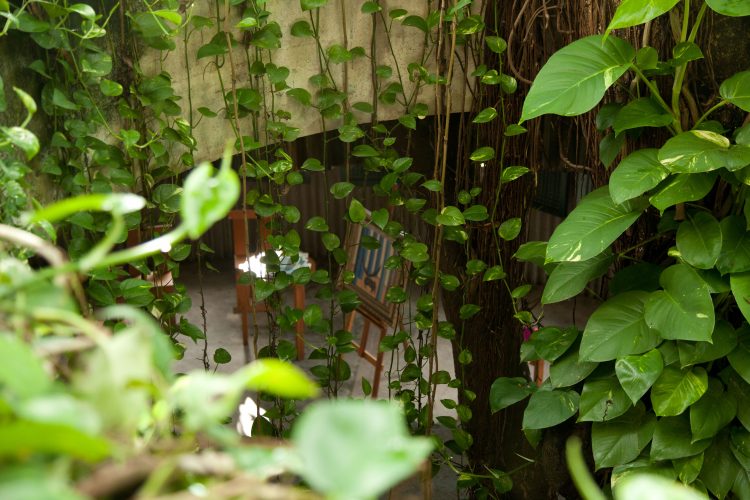
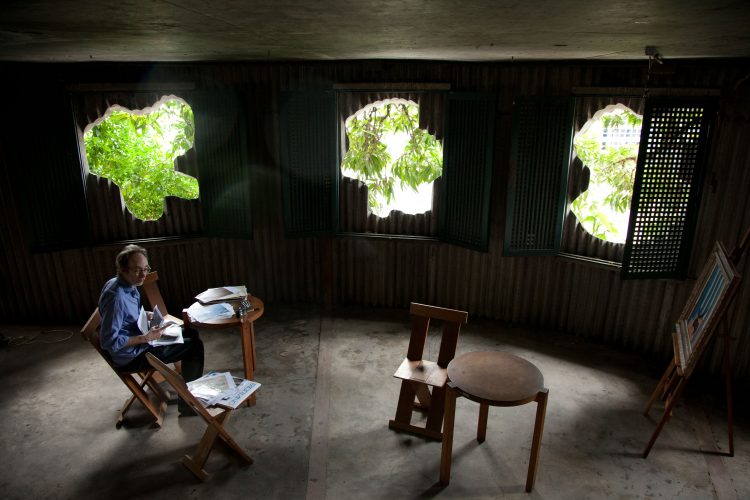
Sasha Huber
Sasha Huber is a visual artist of Swiss-Haitian heritage, born in Zurich (Switzerland) in 1975. She lives and works in Helsinki (Finland). Huber’s work is primarily concerned with the politics of memory and belonging, particularly in relation to colonial residue left in the environment. Sensitive to the subtle threads connecting history and the present, she uses and responds to archival material within a layered creative practice that encompasses video, photography, collaborations with researchers, and performance-based interventions. She has also discovered the compressed-air staple gun as a tool capable of producing visually arresting works that also functions like a symbolic weapon, offering the potential to renegotiate unequal power dynamics.
Cristina Ribas
“Capacete is many things in my life, and I have been part of it with many different intensities, along the years… starting more or less in 2007! A space for learning, producing and thinking, a (non)school, a project space, and a space for feeding up the body and the soul in all sorts of energetic levels”
Daniela Castro
[gview file=”http://capacete.org/wp-content/uploads/2010/11/CAPACETE20ANOS-PAGINAS-castro.pdf”]
…..
Agnaldo Farias
Elfi Turpin
Rafael RG
Luiza Proença
Lucia Prancha
Jorge Menna Barreto
Daniel Salomon
Raimundas Malasauskas
Tamar Guimarães
Vitor Cesar
Hans Christian Dany
Livro para ler – CAPACETE 10 anos
[gview file=”http://capacete.org/wp-content/uploads/2010/05/livro-para-ler-2010PORT-hans.pdf”]
…..
Hans-Christian Dany nasceu em 1966 em Hamburgo, Alemanha. Estudou arte na Hochschule für bildende Künste em Hamburgo. Desde 1989 publicou em diferentes revistas internacionais. Em 1991 fundou a revista Dank e em 1998 a revista Starship. Ele co-editou o livro dagegen dabei (against within / 1998) e co-curou a exposição Ökonomien der Zeit (economies of time), Museum Ludwig em Colónia (2002). Como artista ele participou em diferentes exposições coletivas. Primeira individual insitucional foi na Hamburger Kunsthalle (2002). Recentemente ele publlicou o livro Speed. Eine Gesellschaft auf Droge. (Speed. A society on drugs. / 2008). Trabalha como consultor pesquisador para a Jan van Eyck Academy em Maasticht e vive em Hamburgo.
Jonas Ohlsson
Jonas Ohlsson is a multi-faceted artist: he draws, makes installations and objects, but also composes music, writes texts and performs regularly as Blodfet & DJ Lonely. His visual art is just as multi-faceted. It is comprised of chaotic collections of popular and personal references. In addition to music, provocation and humour are clearly present in his work, as are sex, drugs, politics, history of art and street culture. Formal aspects, such as composition and use of colour, are – ultimately – not as important as the experiences that Ohlsson wants to evoke with his work.
Mariana Castillo Deball
Julia Rometti / Victor Costales
Mariana Lanari
“I took part in Máquina de Responder, a program that happened in parallel to the 29. São Paulo Biennial in 2010/2011. After the end of this program, a few of us remained working together on a book. Two years later, in 2013, I went to a mobile residency in the Amazone. In this trip, I met Bik van der Pol, also residents at the time, and joined their master program at the Sandberg Instituut in Amsterdam. Since then I leave in the Netherlands. It was through Capacete that I moved to the Netherlands, where I live for 5 years. It’s a radical gesture to encourage artists to not produce work during the residence. It’s a permission to slow down and rather listen, observe, interact, beliving that whatever happens in these periods will inevitably produce result in the future. Capacete is a community of people it has the magic of making you feel part of it.”
Lise Harlev
My work explores the formation of identity and the factors that help construct this feeling of identity, be it nationality, intimate relationships or political views. Though my work has taken on such different forms as silkscreen prints, enamel signs, stained glass and photography, it has always drawn aesthetically on graphic design and explored how a subjective content is expressed with an aesthetic designed for the public. At BAC I will be working on a new piece about remembering and revisiting the place where I grew up.
Cayo Honorato
Cayo Honorato (Goiânia, 1979) é professor do Departamento de Artes Visuais do Instituto de Artes da Universidade de Brasília, na área de Teoria e História da Educação em Artes Visuais. Doutor em Educação (2011) pela Universidade de São Paulo, mestre em Educação (2005) e bacharel em Artes Visuais (2000) pela Universidade Federal de Goiás. Desde 2007, tem pesquisado e publicado textos sobre a mediação cultural, no âmbito das relações entre as artes e a educação, com especial interesse pelas práticas documentárias, extrainstitucionais, assim como pela atuação dos públicos. Também colabora com o grupo Mediação Extrainstitucional, em atuação nas redes sociais. I took part of “Máquina de Responder”, the public programme run by Capacete for the 29th Sao Paulo Biennial in 2010.
“Unfortunately I have no pictures from that. It would be nice to see some of them. That was definitely a significant experience in terms of deepening in the Biennial experience, from critical and also affective perspectives.”
Anders Smebye
Bart Lodewijks
From the introduction to Rio de Janeiro Drawings:
“I spent two winters and one summer in Rio de Janeiro in search of suitable places for my chalk drawings. I entrusted myself to local residents who led me to places which were scenes of everyday life. Places that don’t really catch the eye and which only disclose their special character to those who return regularly. I made my drawings on the streets, in a bar, in a church square and in a villa, but most of the time I frequented a small favela bordering on the end of the no-through Rua Benjamin Constant, the street I was staying in. I have written a story about life in this neighbourhood and the drawings I made there”.
Louidgi Beltrami
Wouter Osterholt
“Paraíso Ocupado is a reconstruction of a failed modernist plan for an urban center located in the West zone of Rio de Janeiro. This plan, designed by Oscar Niemeyer, was officially approved in 1970 and served as inspiration for Lúcio Costa’s Pilot Plan for the greater region. All the documents in the exhibition are part of an abandoned archive found in the ruin of one of the three actually constructed circular towers. A website with the digitalized documents was launched with the exhibition, so the material became accessible to the public. This precedes the ultimate objective of Paraíso Ocupado: the establishment of a museum concerned with the urbanization history of Barra da Tijuca.”
Liz Linden
“James and I absolutely loved our time in Rio— we explored as much architecture and Burle Marx gardens as possible and I know that continues to influence both of our work. We would play chess on the street at night and drink cold beer and sweat and generally feel incredibly lucky to be artists in Rio. It is a fantastically inspiring place to be and we would love to come back, with our kids, sometime soon.”
Otto Berchem
Adriana Lara
“I was invited to stay for a month but later got an extended invitation to stay for longer. I was having such a fantastic time and it was really sad as I couldn’t stay because I had to go back to work for an artfair solo presentation. Helmut argued that I was already working by being there. It didn’t make much sense to me. On my way back to the airport from the bus I saw a grafiti which said ‘Os artistas verdadeiros estão nas ruas’, which somehow revealed to me what Helmut was trying to say. I wanted to stop the bus and go back to Capacete but I didn’t, just left trying to figure out how this reflection could leave something positive at that point.”
Jean-Pascal Flavien
Livro para ler 2008 – CAPACETE 10 anos
………
Born 1971 in Le Mans, France. Lives and works in Berlin. Jean-Pascal Flavien’s practice combines elements from architecture, sculpture, and the performative, to create works that are both precise and concrete but also poetic and evocative. The models of houses, for example, are generated from settings imposed by the artist. Like preliminary sketches of large-scale paintings, his models for houses are maquettes for possible scenarios and perhaps views from the past or future of these fictional buildings. His altered domestic objects, such chairs, tables, outlets or blinds draw attention to the way in which design and architecture shape our experience of space but also how they can more fundamentally determine our experience of ourselves and of others.
[ess_grid alias=”Galeria de foto” layers=’{“custom-image”:{“00″:”4665″},”custom-type”:{“00″:”image"},”use-skin”:{“00″:”–1″}}';;][/ess_grid]
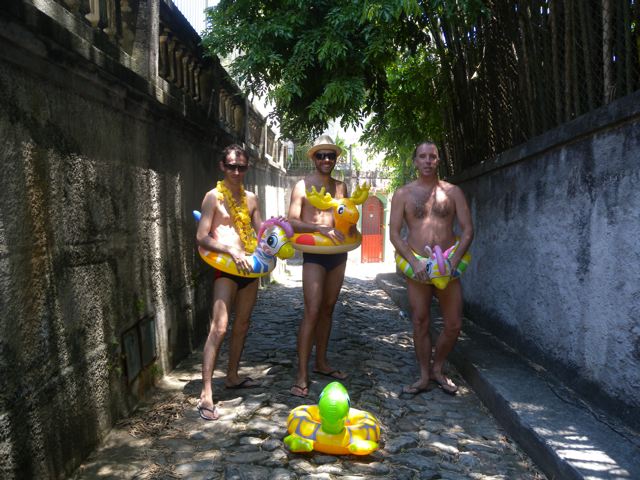

Ducha
Adriana Pineda
Adriana es Maestra en Artes Plásticas de la Universidad Nacional de Colombia, Medellín. Es fundadora y gestora de Taller 7, proyecto auto gestionado que se propone como laboratorio y plataforma para la discusión, producción y promoción de las prácticas artísticas y el intercambio de ideas locales y foráneas, desarrollando proyectos colectivos e invitando artistas en calidad de residentes o expositores. Se ha desempeñado como Directora de producción del 44 Salón Nacional de Artistas, Pereira (2016), Coordinadora general de montaje, I Bienal de Arte de Cartagena -Biaci (2014), y productora general de ARCO COLOMBIA (2015). Adriana fue investigadora para el Museo Casa de la Memoria de Medellín, en donde curó la exposición Relatos desde la Frontera (2014).
Santiago Garcia Navarro
livro para ler – CAPACETE 10 anos
[gview file=”http://capacete.org/wp-content/uploads/2010/04/livro-para-ler-2010PORT-santiago.pdf”]
…..
I’m teaching at the Art Program of Torcuato Di Tella University, Buenos Aires. I’m also writing, curating some exhibitions, and organizing two readers on contemporary art.
[ess_grid alias=”Galeria de foto” layers='{“custom-image”:{“00″:”4627″,”01″:”4625″,”02″:”4623″,”03”:”4621",”04″:”4619″,”05″:”4615″,”06″:”4613",”07″:”4611″},”custom-type”:{“00″:”image”,”01″:”image”,”02″:”image”,”03″:”image”,”04″:”image”,”05″:”image”,”06″:”image”,”07":”image”},”use-skin”:{“00″:”-1″,”01″:”-1″,”02″:”-1″,”03″:”-1″,”04″:”-1″,"05″:”-1″,”06″:”-1″,”07″:”-1″}}’][/ess_grid]
Amilcar Packer
…..
Amilcar Packer nasceu em Santiago do Chile em 1974 e mudou-se para o Brasil em 1982. Formado em Filosofía pela Universidade de São Paulo, é mestrando em Psicologia Clínica pelo Núcleo de Estudos da Subjetividade da PUC São Paulo. Packer desenvolve uma prática que reconfigura os campos semânticos de objetos, arquiteturas e corpos humanos por meio de ações e intervenções, fotografías, vídeos, instalações, e apresentações em diversos formatos que estabelecem campos relacionais e que buscam subverter as gramáticas normativas dos espaços sociais e os mecanismos históricos de poder. Suas atividades visam neutralizar discursos dominantes, e contribuir para desinstalar dispositivos de opressão instituídos e cristalizados na partilha cultural do sensível – com sua correlata segregação do espaço –; na sedimentação de estruturas de poder – e sua naturalização na linguagem; e nos padrões sociais e socializantes de comportamento – que impõem políticas de homogeneização das subjetividades.
Suely Rolnik
Gabriel Lester
……
Past and Future in thin air.
“If there has ever been a possibility to turn back time, this would be a suited moment to do so. However much things would probably turnout to be the same, I would have known things in advance, provided in turning back time, I could remember the future. That’s how I look at it now, I mean, from where I can see things at this point, today. Then, mid-day early July 2006, I found myself surrounded by as much endless future as overwhelming depths of the past. We, Helmut and I, were on our way to one of Peru’s highest mountain peeks of the Andes. Driving our ragged rented car with caution over an endlessly winding and unpaved mountain trail we arrived at a valley so vast and boundless, that my first thought was how we had crossed the ages to enter a pre-historic landscape. And then and there, as I envisioned myself having traveled back trough a loophole in time, soon to be surrounded by long lost wildlife and luscious vegetation, both my past and future flashed by. At the time a substantial part of my fortunate and solid world had started to show cracks and crumbles. In April I had moved back from New York to support my mother in her life’s struggle against lung cancer, only to join Helmut on his journey trough Peru in June and July. It had been my mother’s whish and joy for me to continue my adventures life as much as possible. And at every village or city on the course of our voyage, I rushed into an internet café and wrote home an exhilarated travelers report. It was as if I could share my journey to one of the highest peeks of the world; as if I could bring my mother to where time had stood still and where the air was so pure that it could cleanse all disease. And trough the contact we kept during my travels, it became clear that my latest expedition had in a way become as thrilling to her as it was to me.
+ We stopped the car at the entrance of a cave covered in pre-historic paintings. Stepping out of the car I was overcome by dizziness and the extensive violence of the nature that surrounded me danced before my eyes. Maybe I suffered from some light version of altitude disease and possibly the oscillating travel had exhausted me, what I could feel as the world twisted before my eyes, was a deep confidence and optimism. Then and there everything, next week, next moth, next year, my entire future would be magnificent and all right. Hemlut and I walked around marveling at the valley beneath us, and the mountaintops above. I thought about how I could enjoy being back in Brussels, how I would witness my mother’s recovery and how I would travel to Asia for the first time. Later that day we reached the mountain top at over 5000 meters (3 miles) height. The air at the top was so thin that we could hardly breath or speak. I peered into the distance, imagined that distance to be the depth of time and was sure that in the future we could all live forever.” P E R U . I M P R O V “Capactete’s ROAD lead to my doorstep and an invitation to work and travel a stretch alongside the Pan-American highway was offered and excepted. The journey would lead from Lima (Peru) to Quito (Equator). People asked “what will you do?”. My reply was, that I had been doing several things the past years and that, most likely, I would do one or a few of those things there. However, slowly a concept of what could happen started to take shape. When one thinks of a road-movie, the principle is that between start and finish of a journey a story unfolds. This is a lineal narrative. A story that is told on different levels in time and location is a parallel narrative. I envisioned a road movie constructed as a parallel narrative. Instead of events occurring after each other as the road is traveled, it would seem to all happen at once. With this idea and allot of confidence in Helmut Batista’s and my own ability to connect to people and improvise, I left for Peru via Rio de Janeiro. In Lima both Helmut and I were invited to lecture at ‘La Culpable’ – an artist run space. There we met with several local artist and curators, some of which could advise us on where to go and what to see. Soon after, we left Lima for the Andes Mountains. I felt like a pioneer, traveling on intuition and opportunity. And while driving through the impressive nature we made regular stops to shoot a scene or sequence. The idea to create a parallel movie has never left the project, however confronted with the reality of our travels and in order to work daily in un-predictable conditions, the rules of the concept were loosened to fit the actuality. What had occurred to me during the first days of the travel is that if I was going to work with locals and mostly on an instant basis, I should work with a modus that enabled me to stop the car, mount the camera and start shooting. This principle seems simple and easy, but in order to avoid rather digested exotica and/or tourist snapshots, I needed to challenge the images I was making at all time. This led to a series of improvised scenes – shot during the entire journey trough Peru – where at first I would objectively document a scene or location. As such I documented what was going on ‘for real’; nothing was orchestrated, choreographed or interfered with. The second phase was to engage the documented image – the people and location – and change the objective document into a highly subjective document. As such a ‘natural’ scene had become ‘artificial’. A play between reality and fiction was constructed carefully. After returning to Lima from the Andes, we traveled to the city of Iquitos in the middle of the Amazon rainforest. Colombian/Spanish artist Raimond Chaves joined us together with Peruvian artist Gilda Mantilla who were both researching works the 2006 Sao Paulo biennale had commissioned them to produce. By car and mostly by boat, the four of us traveled trough the rainforest and over the Amazon river, all the while setting up and filming scenes. After a few days stopover in Iquitos we returned to Lima and got on the road to Quito in Equator. In Equator we did not have the opportunity to continue to work, but were invited to lecture at the Catholic university of Quito. All in the entire ROAD journey/project took us trough deserts, over mountains, past the Pacific Ocean, cross the jungle and finally up to the capital of Equator. All the while scenes for the project were shot, alongside photos and other video documents that were stimulated on the spot. At this moment most of the digital material is ripening in some a hard disk. In the near future, with a nice blend of time, a scent of post-production and a touch of drama, the works will be served. Seriously though, the ROAD project was hugely productive and inspiring, leaving me with allot of fruits to be plucked and appropriated in some way. For the moment this feels like a luxury problem, since many of the scenes shot have worked out really well and there is much potential for several works or directions to venture into. Time will tell if the final work will be a parallel edit of a lineal experience or a selection of improvised scenes, narrating small adventures…” Gabriel lester 07.2006 -
Ligia Nobre
livro para ler – CAPACETE 10 anos
[gview file=”http://capacete.org/wp-content/uploads/2018/11/livro-para-ler-2010PORT-ligia.pdf”]
….
Ligia Nobre é arquiteta e pesquisadora, graduada pela FAU-Mackenzie (São Paulo) e mestra em História e Teoria da Arquitetura Contemporânea pela Architectural Association School of Architecture (Londres). Em 2007/08 trabalhou com pesquisa urbana e ensino no Studio Basel – Contemporary City Institute/Departamento de Arquitetura da Universidade ETH Zurich (Basiléia). Co-fundou e dirigiu com Cécile Zoonens a plataforma cultural sem fins lucrativos exo experimental org. (São Paulo, 2002 – 2007) que promoveu projetos experimentais nas áreas de urbanismo, artes visuais e questões sociais, através de publicações, seminários, workshops, exposições e residências. Foi responsável pela coordenação editorial do livro do artista Peter Friedl Trabalhando no Copan / Working at Copan (Steimberg, 2007), e é co-autora de artigo sobre arquitetura brasileira contemporânea para futura publicação da editora Phaidon (Londres, 2009), dentre outros.
Kazuo Nakano é arquiteto urbanista, graduado pela FAU- USP, com pós-graduação em gestão urbana e ambiental pelo Institute for Housing and Urban Development – IHS de Rotterdam, Holanda, e mestre em Estruturas Ambientais e Urbanas pela FAU – USP. Trabalhou no Centro Brasileiro de Análise e Planejamento – CEBRAP e foi Gerente de Projeto da Secretaria Nacional de Programas Urbanos do Ministério das Cidades. Atua como técnico do Pólis – Instituto de Estudos, Formação e Assessoria em Políticas Sociais desenvolvendo pesquisas urbanas e coordenando assessorias técnicas em diversas cidades brasileiras na elaboração de planos diretores participativos. Tem artigos sobre esse assunto publicados em livros e periódicos especializados.
